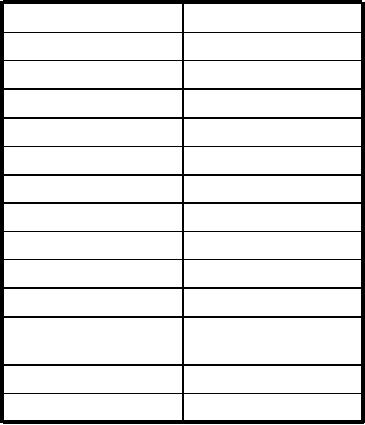
50-inch widths. They are fire-, water-, weather-, and
Each number means a certain weight in ounces per
mildew-resistant.
square yard of cloth. For example, No. 1 means 28.71
ounces per square yard; No. 6 means 20.74 ounces per
Another type of cloth, a black neoprene-coated
square yard; and No. 12 means 11.16 ounces per square
material, is less suited for topside use but has many
yard. Canvas in weights other than those specifically
below-deck applications, such as for blackout and
designated under the numbered system is called ounce
welding curtains. This material weighs approximately
duck. Army ducks are ounce ducks similar to numbered
2.3 ounces per square yard and comes in a 39-inch
duck, but have finer yarns, higher cloth counts, and
width. Generally, you should give synthetic cloths the
usually lighter weights. The following items are a
same care as synthetic lines. When they are dirty,
sample of articles made from different weights of
however, you should wash synthetic fabrics with saddle
canvas.
soap or any other mild soap and water; scrub them with
a soft bristle brush, using a circular motion; and rinse
ARTICLE
NO. OF CANVAS
them with clear water. In some instances, two cleanings
1
Sandbags
may be necessary.
1
Hammocks
All hems should be triple-folded and sewed, but
reinforcing material and other patches may be sewed or
Hatch paulins
2
cemented in place. When you cement a patch, clean the
Berth bottoms
4
area with a solvent. Then apply a coat of cement to the
patch and to the surface to be repaired or strengthened.
4
Seabags
Allow these coatings to dry, then apply a second coat to
Gun covers
4
each surface. When these coatings are tacky, position
the patch. Rub or roll the patch and make certain that all
4
Muzzle bags
points make contact.
Large boat covers
6
With synthetic cloth, do not use manila for bolt
Hose rack covers
8
ropes and lashings, because the manila will stain the
cloth. Use cotton line or one of the synthetic lines. The
Soiled clothes bags
8
eyelet-and-ring type of grommet has a tendency to slide
General-purpose
8
and pull out of synthetic cloths; therefore, only the spur
paulins
type of grommet is recommended.
Shower curtains
10
TREATED CANVAS
Destruction bags
12
Much of the canvas issued in the Navy is treated to
Canvas is usually made up in bolts of from 85 to 100
make it resistant to fire, water, weather, and mildew.
yards, but is issued by the linear yard, in widths from 22
Some is waterproof and oil- and gasoline-resistant.
to 72 inches.
Current specifications for building ships require that all
Even with the best of care, canvas is relatively
topside canvas be treated according to the intended use.
short-lived, and for this reason, the Navy is using more
Canvas to be used below decks is usually white and
synthetic fabrics. Synthetics are not only lighter and
untreated. Preservatives are available for shipboard use
easier to stow, but also are rot- and mildew-resistant.
on untreated canvas or for re-treating canvas.
Synthetic fabric, like synthetic line, costs more than
CARE AND STOWAGE
natural fabric. Because of this greater cost, you must be
more selective in its use.
Canvas is very expensive, so learn to care for it and
make sure to never abuse it. New and unused canvas,
One type of synthetic fabric used extensively for
spare covers, and so on, should be stowed in a clean, dry
tarps and awnings and for boat, winch, and reel covers is
storeroom. Never store canvas where acid is or has been
a nylon cloth with a vinyl film on both sides. (The
stowed; acid fumes are detrimental to canvas. Make
smooth or face side is the side to expose to the weather.)
every effort to provide a space free from rats, mice, and
Two different companies furnish this type of cloth under
insects. Do not stow wet, painted, or oil-soaked canvas
their own brand names (Herculite #80 and
below decks. Occasionally it is necessary to scrub
Hypalon). These white or grey materials weigh
canvas that has become dirty or stained by grease or oil.
approximately 19.6 ounces per square yard and come in
5-7

